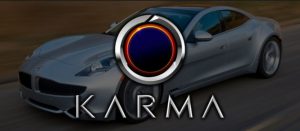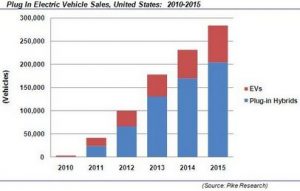Electric trucks took up a lot of space in the exhibit hall at this year’s ACT Expo — and that meant 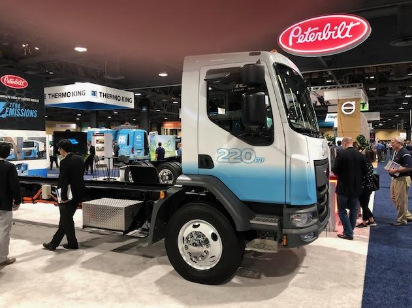 medium and heavy trucks along with commercial applications such as electric delivery and refuse trucks. This time major truckmakers took center stage, and specialized makers had announcements to share as well. With about 4,000 attendees, it was the largest ACT Expo yet.
medium and heavy trucks along with commercial applications such as electric delivery and refuse trucks. This time major truckmakers took center stage, and specialized makers had announcements to share as well. With about 4,000 attendees, it was the largest ACT Expo yet.
During his keynote speech, Roger Nielsen, president and CEO of Daimler Trucks North America (DTNA), the largest commercial vehicle manufacturer in North America, said his company will be putting about 50 battery electric test vehicles on roads by the end of this year through its Freightliner division, built at a renovated plant in Oregon. 20 of them will be medium- and heavy-duty electric trucks for Penske Corp. and NFI Inc., a major third-party logistics company, under a grant from the South Coast Air Quality Management District. Near-zero-emissions natural gas medium- and heavy-duty vehicles are currently available and will continue from Freightliner as an interim solution until full commercialization of the battery-electric Freightliner eM2 and eCascadia, he said. Its Thomas Built unit will be rolling out Proterra-powered electric school buses.
Peterbilt Motors Co. showed off new electric trucks, including the Model 220EV, Model 520EV, and Model 579EV. The 220EV is spec’d with the Meritor Blue Horizon eAxle and the 520EV will feature the Transpower mid-ship powertrain configuration, while the 579EV will feature the new Allison AXE Series e-Axle. Six of the 579EVs were demonstrated at the exhibit that have been finished for customers. “Today, we have 14 electric vehicles built, on our way to more than 30 by the end of the year, for real customer routes and to analyze performance so that our production options meet the standards customers expect when buying a Peterbilt,” said Peterbilt’s Chief Engineer Scott Newhouse.
While it was outside ACT Expo, Ford on Wednesday announced it’s putting $500 million into electric truck startup Rivian Automotive. Both companies have agreed to work together to develop a battery electric vehicle for Ford’s growing EV portfolio using Rivian’s skateboard platform.
Volvo Trucks North America Wednesday hosted the California Air Resources Board (CARB) as they presented a $44.8 million check to the South Coast Air Quality Management District (South Coast AQMD) for the Volvo LIGHTS (Low Impact Green Heavy Transport Solutions) project. The Volvo LIGHTS project is a partnership among the Volvo Group, South Coast AQMD and industry leaders in transportation and electrical charging infrastructure. The project was created ti demonstrate the ability of battery electric vehicles to improve freight and warehouse efficiencies, reduce emissions, and improve air quality. As part of the project, Volvo Trucks will introduce all-electric Volvo VNR regional-haul demonstrators in California later this year, with vehicle sales planned to begin in 2020.
Other introductions at ACT Expo 2019 included:
- BYD Motors will deliver 14 yard tractors to two BNSF Railway intermodal facilities in Southern California, adding to an ongoing demonstration project.
- Chanje has partnered with refrigeration unit supplier Thermo King on a prototype zero-emissions refrigerated van.
- Xos, the new name for electric truck startup Thor Trucks, will retrofit two Loomis Armored US cash-hauling trucks. An order for 100 more trucks awaits if the test models show the trucks’ value.
- EV Connect is launching a program aimed at standardizing EV charger management and use for both transportation fleets and charging-equipment developers. The EV Charge Station Certification program already has been completed by seven of the industry’s largest charger makers.
- Ryder’s booth featured a comprehensive charging infrastructure solution, provided by In-Charge Energy. In-Charge provides nationwide turnkey energy and commercial electric vehicle infrastructure solutions to ensure customers maximize the full economic benefits of adopting electric vehicles into their fleet. Its end-to-end model focusing on behind the meter solutions is an industry first.
- An Amply Power Inc. white paper showed fleets saved an average 37 percent compared with traditional fuels by electrifying their buses and light-duty vehicles. Fleets that charged during off-peak hours could save as much as 60 percent, according to the white paper.
- Tritium created the “world’s most powerful charger,” the Veefil-PK 175-475kW DC High Power Charger which can add nearly 300 miles range to an EV in just 10 minutes.
- The first production fuel cell-powered heavy-duty truck jointly developed by Toyota and Kenworth Truck Co. is going forward. The new truck is the first of 10 planned under a $41 million California Air Resources Board grant matched by Toyota, Kenworth, and Royal Dutch Shell.
- Penske Truck Leasing announced it will open commercial heavy-duty electric vehicle charging stations with 14 high-speed chargers at four of its existing facilities in Southern California. These will be among the first DC fast charging stations in the U.S. designed specifically for heavy-duty commercial electric vehicles.
- The North American Council for Freight Efficiency recently released a report, Regional Haul: An Opportunity for Trucking, that looks at this growing market segment and was shared during a seminar at ACT Expo. Long-haul trucking isn’t what it used to be, according to the report. Forty five percent of the Class 8 tractors produced today are day cabs and a high percentage of those trucks are involved in regional haul operations.
- Gladstein, Neandross and Associates (GNA) and the University of California at Riverside’s Bourns College of Engineering – Center for Environmental Research and Technology (CE-CERT) announced the launch of the Low and Zero Emission Readiness (LAZER) Initiative. This new collaboration will support organizations —including transit agencies, refuse operations, trucking carriers, delivery fleets, school districts, municipalities, and more — in evaluating the real-world economic and environmental benefits of advanced transportation technologies.

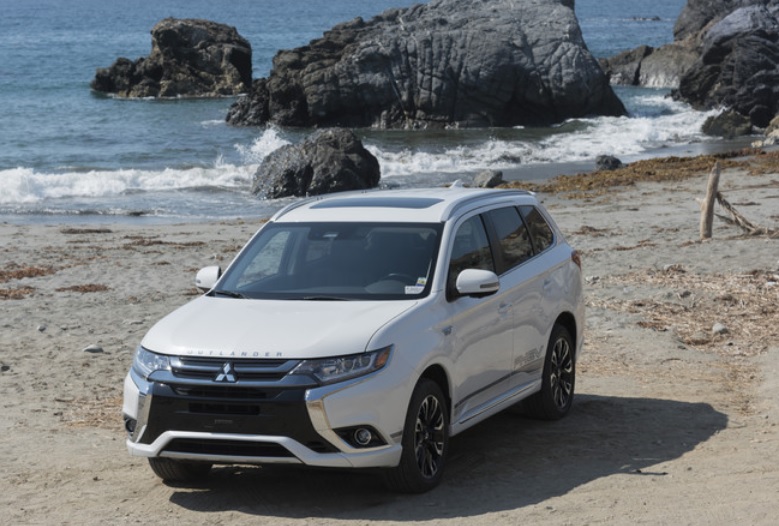 $34,595. The plug-in hybrid SUV has done extremely well in the European market, with the question of when the vehicle would come to America having been asked quite a few times in recent years. The all-wheel drive SUV is powered by a 2.0-liter gasoline engine and two electric motors, and features the company’s Super All-Wheel Control (S-AWC) system. It also comes with DC fast charging capability. Mitsubishi says the commemorative timing is right as the company celebrates its 100-year history, over 50 years of electromobility, and decades of four-wheel drive technology customized on the international rally circuit.
$34,595. The plug-in hybrid SUV has done extremely well in the European market, with the question of when the vehicle would come to America having been asked quite a few times in recent years. The all-wheel drive SUV is powered by a 2.0-liter gasoline engine and two electric motors, and features the company’s Super All-Wheel Control (S-AWC) system. It also comes with DC fast charging capability. Mitsubishi says the commemorative timing is right as the company celebrates its 100-year history, over 50 years of electromobility, and decades of four-wheel drive technology customized on the international rally circuit. abroad in the required credits that come from either blending 10% ethanol into gasoline or buying credits from ethanol producers. Carl Icahn, who heads up refiner CVR Energy, has been pushing hard for changing the rules. He recently stepped down from is advisory role to the Trump administration after a wave of heavy criticism. His company, along with other major players like Valero Energy Corp., would be saving quite a bit in RFS credits that would no longer need to be purchased. Trump had backed the RFS and continuation of it in its present form while running for president; now he seems to be leaning toward the oil industry’s desired outcome. Biofuels advocate U.S. Senator Chuck Grassley (R-Iowa)
abroad in the required credits that come from either blending 10% ethanol into gasoline or buying credits from ethanol producers. Carl Icahn, who heads up refiner CVR Energy, has been pushing hard for changing the rules. He recently stepped down from is advisory role to the Trump administration after a wave of heavy criticism. His company, along with other major players like Valero Energy Corp., would be saving quite a bit in RFS credits that would no longer need to be purchased. Trump had backed the RFS and continuation of it in its present form while running for president; now he seems to be leaning toward the oil industry’s desired outcome. Biofuels advocate U.S. Senator Chuck Grassley (R-Iowa)  model to roll off the production line. Tesla board member Ira Ehrenpreis had been the first make a down payment on the Model 3, but had turned over his rights to the first production model to Musk as a birthday gift. Musk, who turned 46, had previously purchased the very first Tesla Roadster and Model X, but not the Model S. The company is scheduled to deliver 30 of these units by the end of this month and aims to reach 20,000 units per month by December.
model to roll off the production line. Tesla board member Ira Ehrenpreis had been the first make a down payment on the Model 3, but had turned over his rights to the first production model to Musk as a birthday gift. Musk, who turned 46, had previously purchased the very first Tesla Roadster and Model X, but not the Model S. The company is scheduled to deliver 30 of these units by the end of this month and aims to reach 20,000 units per month by December.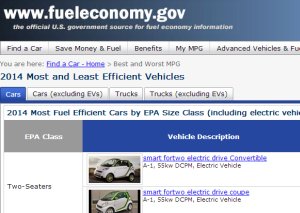 offers an effective policy solution that will increase adoption of PEVs. That will be the case whether implemented alone or with another policy such as government incentives, according to the study. The current standards determine an automaker’s compliance based on annual production volume-weighted average fuel economy of the automaker’s fleet of total vehicles manufactured. The Trump administration is expected to wait until the original deadline of April 2018 to finalize the second phase of rules through 2025; and will probably soften the standards. Selling much higher volumes of PEVs would resolve that problem; automakers will be motivated to build a wide selection of PEV models and market them effectively to hit federal targets, even if softened by the Trump administration.
offers an effective policy solution that will increase adoption of PEVs. That will be the case whether implemented alone or with another policy such as government incentives, according to the study. The current standards determine an automaker’s compliance based on annual production volume-weighted average fuel economy of the automaker’s fleet of total vehicles manufactured. The Trump administration is expected to wait until the original deadline of April 2018 to finalize the second phase of rules through 2025; and will probably soften the standards. Selling much higher volumes of PEVs would resolve that problem; automakers will be motivated to build a wide selection of PEV models and market them effectively to hit federal targets, even if softened by the Trump administration. Max Energi plug-in hybrid. Ford has been disappointed with the C-Max Energi’s sales performance, though it has been doing a little better lately. Ford has been playing with the idea of a PHEV Escape for about a decade, having tested out a small fleet. Hybrid versions of competitors are out there with the Toyota RAV4 and Nissan Rogue, and an expectation that Honda will bring out a hybrid CR-V.
Max Energi plug-in hybrid. Ford has been disappointed with the C-Max Energi’s sales performance, though it has been doing a little better lately. Ford has been playing with the idea of a PHEV Escape for about a decade, having tested out a small fleet. Hybrid versions of competitors are out there with the Toyota RAV4 and Nissan Rogue, and an expectation that Honda will bring out a hybrid CR-V.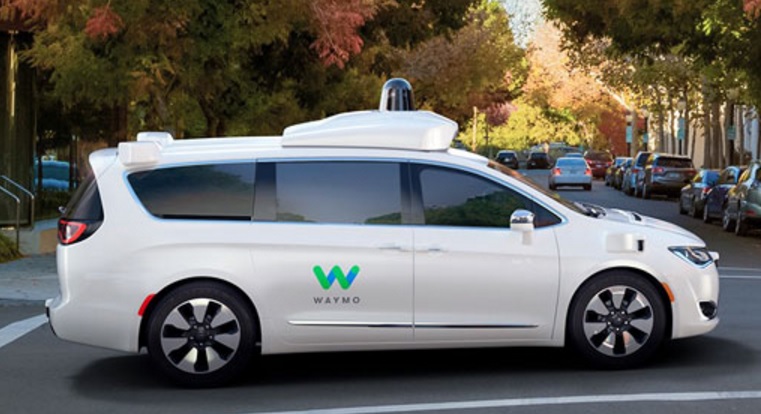 Avis Budget Group for the
Avis Budget Group for the  If you
If you 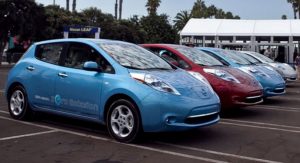 While plug-in electrified vehicles did break the 1% mark for total U.S. new vehicle sales last month, and hybrids moved back to being over 2%, we’re still a long ways away from them making up a substantial share of the market. The same is true for advanced fuels like renewable diesel – sales volumes are up but it’s still very early in adoption of these new alternative fuels.
While plug-in electrified vehicles did break the 1% mark for total U.S. new vehicle sales last month, and hybrids moved back to being over 2%, we’re still a long ways away from them making up a substantial share of the market. The same is true for advanced fuels like renewable diesel – sales volumes are up but it’s still very early in adoption of these new alternative fuels.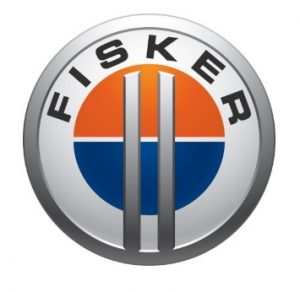 Fisker Inc.: Henrik Fisker is
Fisker Inc.: Henrik Fisker is 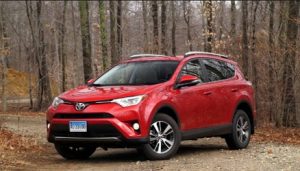 If you were to study U.S. new vehicle sales data and compare it to Plug In America’s plug-in vehicles directory, you’d see something that the two sources have in common: popularity of utility vehicles. By utility vehicles, I would include SUVs, crossovers, vans, and hatchbacks. If you take a close look at new vehicle sales in the U.S. and upcoming vehicle launches announced by automakers at the Paris Motor Show, you can get a look at the increasingly important role these vehicle categories will be playing.
If you were to study U.S. new vehicle sales data and compare it to Plug In America’s plug-in vehicles directory, you’d see something that the two sources have in common: popularity of utility vehicles. By utility vehicles, I would include SUVs, crossovers, vans, and hatchbacks. If you take a close look at new vehicle sales in the U.S. and upcoming vehicle launches announced by automakers at the Paris Motor Show, you can get a look at the increasingly important role these vehicle categories will be playing.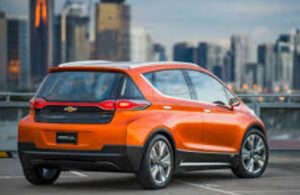 getting as much attention lately as the Nissan Leaf and Chevy Volt did during their late 2010 launches. While the range of 238 miles per charge, and its price-competitive position against the upcoming Tesla Model 3, are seen as key selling points, GM decided to invest more in a crossover SUV; as opposed to a small car like the Chevy Spark EV, which never did well in sales. The Chevrolet Sonic may have been more of a useful platform to model for the Bolt. The EPA is rating the Sonic and the Bolt as small wagons, though GM considers them differently. For some reason, the EPA has yet to adopt the crossover category.
getting as much attention lately as the Nissan Leaf and Chevy Volt did during their late 2010 launches. While the range of 238 miles per charge, and its price-competitive position against the upcoming Tesla Model 3, are seen as key selling points, GM decided to invest more in a crossover SUV; as opposed to a small car like the Chevy Spark EV, which never did well in sales. The Chevrolet Sonic may have been more of a useful platform to model for the Bolt. The EPA is rating the Sonic and the Bolt as small wagons, though GM considers them differently. For some reason, the EPA has yet to adopt the crossover category.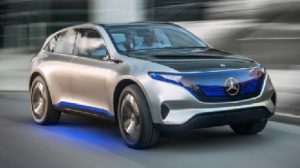 EQ concept in Paris. The EQ brand unveiling is the first step in launching 10 new battery-electric models by 2025 in Daimler’s strategy to become the global leader in electric vehicle technology; it appears to serve as a sub-brand of Daimler’s Mercedes-Benz division. Daimler said that the Generation EQ electric crossover will have a range up to 500 kilometers (311 miles), which is probably based on Europe’s NEDC standards; that will be lower in U.S. mileage range under EPA measures. The concept SUV is being moving closer to production, and is being built on an architecture developed specifically for all-electric models. That architecture is adaptable for crossovers, SUVs, sedans, coupes, and other model series, the company said.
EQ concept in Paris. The EQ brand unveiling is the first step in launching 10 new battery-electric models by 2025 in Daimler’s strategy to become the global leader in electric vehicle technology; it appears to serve as a sub-brand of Daimler’s Mercedes-Benz division. Daimler said that the Generation EQ electric crossover will have a range up to 500 kilometers (311 miles), which is probably based on Europe’s NEDC standards; that will be lower in U.S. mileage range under EPA measures. The concept SUV is being moving closer to production, and is being built on an architecture developed specifically for all-electric models. That architecture is adaptable for crossovers, SUVs, sedans, coupes, and other model series, the company said.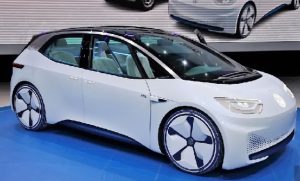 concept, called I.D., at the show. It will be the first new model built on the automaker’s MEB modular electric platform. Its battery in-flat-floor architecture is built within a futuristic exterior design with a glass roof, artistic wheel covers, digital headlamps, and sliding rear doors. It’s expected to hit production level in 2019 for purchase starting in 2020. It’s part of the automaker’s Strategy 25, where the company will be building up to one million EVs by the middle of the next decade. Last week, the automaker announced it will be expanding sales of its e-Golf nationwide in the U.S., beyond a few select states. However, VW also revealed in Paris that the I.D. will eventually replace the e-Golf (but not the Golf). Several of VW’s concept vehicles in recent years have been rolled out on SUV and crossover platforms, including the Budd-E concept.
concept, called I.D., at the show. It will be the first new model built on the automaker’s MEB modular electric platform. Its battery in-flat-floor architecture is built within a futuristic exterior design with a glass roof, artistic wheel covers, digital headlamps, and sliding rear doors. It’s expected to hit production level in 2019 for purchase starting in 2020. It’s part of the automaker’s Strategy 25, where the company will be building up to one million EVs by the middle of the next decade. Last week, the automaker announced it will be expanding sales of its e-Golf nationwide in the U.S., beyond a few select states. However, VW also revealed in Paris that the I.D. will eventually replace the e-Golf (but not the Golf). Several of VW’s concept vehicles in recent years have been rolled out on SUV and crossover platforms, including the Budd-E concept. around the automaker’s next-generation plug-in hybrid system. The system uses three electric motors and an internal combustion engine designed specifically for hybrid applications. Mitsubishi’s Executive Vice President of Overseas Operations, Kozo Shiraji, introduced the GT-PHEV concept (which stands for Ground Tourer Plug-In Hybrid Electric Vehicle) as the “possible form for a future large SUV.” The company said that the driving range for its next plug-in vehicle promises to expand on the current Mitsubishi Outlander PHEV’s range. The Outlander PHEV is a strong selling plug-in vehicle in the European market.
around the automaker’s next-generation plug-in hybrid system. The system uses three electric motors and an internal combustion engine designed specifically for hybrid applications. Mitsubishi’s Executive Vice President of Overseas Operations, Kozo Shiraji, introduced the GT-PHEV concept (which stands for Ground Tourer Plug-In Hybrid Electric Vehicle) as the “possible form for a future large SUV.” The company said that the driving range for its next plug-in vehicle promises to expand on the current Mitsubishi Outlander PHEV’s range. The Outlander PHEV is a strong selling plug-in vehicle in the European market. report, Fiat Chrysler engineers are putting the Chrysler Pacifica plug-in hybrid through final testing and calibration checks on the streets of metro Detroit ahead of the start of production, which is scheduled for next month. It looks just like the gasoline-powered version, except for special badges and a battery charging port on the left front fender.
report, Fiat Chrysler engineers are putting the Chrysler Pacifica plug-in hybrid through final testing and calibration checks on the streets of metro Detroit ahead of the start of production, which is scheduled for next month. It looks just like the gasoline-powered version, except for special badges and a battery charging port on the left front fender.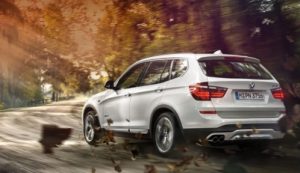 vehicle owners will buy gasoline-engine CUV and SUV versions from BMW and competitors, but so far the i3 hasn’t clicked. It has gone over well with a few EV advocates and sales have been okay. For now, BMW seems to be counting on a plug-in hybrid variant of the X3. The next-generation X3 is on its way and BMW wants to create a hybrid version as the company sees it as a more mainstream offering to the consumer. While current BMW plug-in hybrid cars (BMW X5 xDrive40e and 740e) are pricey, the X3 would give buyers another mainstream offering next to the BMW 330e, according to BMW Blog.
vehicle owners will buy gasoline-engine CUV and SUV versions from BMW and competitors, but so far the i3 hasn’t clicked. It has gone over well with a few EV advocates and sales have been okay. For now, BMW seems to be counting on a plug-in hybrid variant of the X3. The next-generation X3 is on its way and BMW wants to create a hybrid version as the company sees it as a more mainstream offering to the consumer. While current BMW plug-in hybrid cars (BMW X5 xDrive40e and 740e) are pricey, the X3 would give buyers another mainstream offering next to the BMW 330e, according to BMW Blog.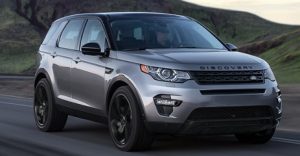 through its Range Rover and Land Rover brands. The company is first developing a new plug-in hybrid powertrain set to be offered on the Range Rover Sport. It will be based around the firm’s four-cylinder Ingenium gasoline engine, mated to the engine with an electric designed to work with the company’s existing eight-speed automatic transmission. For the second hybrid system being developed, it will be designed for the Range Rover Evoque and Land Rover Discovery Sport. It’ll utilize a three-cylinder diesel engine with an electric turbocharger and a small electric motor. Additionally, a 48-volt electrical system will provide power to the water pump and air conditioner. These models aren’t expected to debut until the end of 2018.
through its Range Rover and Land Rover brands. The company is first developing a new plug-in hybrid powertrain set to be offered on the Range Rover Sport. It will be based around the firm’s four-cylinder Ingenium gasoline engine, mated to the engine with an electric designed to work with the company’s existing eight-speed automatic transmission. For the second hybrid system being developed, it will be designed for the Range Rover Evoque and Land Rover Discovery Sport. It’ll utilize a three-cylinder diesel engine with an electric turbocharger and a small electric motor. Additionally, a 48-volt electrical system will provide power to the water pump and air conditioner. These models aren’t expected to debut until the end of 2018. internally as the C Bev, this all-electric SUV claims a 311-mile range by European standards. Audi says that it will be sized between its Q5 and a Q7 SUV models. Audi has been quite pleased by how high its sales numbers have been in the SUV segment in recent years, so an electric SUV makes a great deal of sense to the company for hitting emissions targets. Earlier this year, the company announced it will be going into production on the E-Tron Quatro by 2018. Audi said that the new model will use three electric motors and a quick charging, high‑capacity battery.
internally as the C Bev, this all-electric SUV claims a 311-mile range by European standards. Audi says that it will be sized between its Q5 and a Q7 SUV models. Audi has been quite pleased by how high its sales numbers have been in the SUV segment in recent years, so an electric SUV makes a great deal of sense to the company for hitting emissions targets. Earlier this year, the company announced it will be going into production on the E-Tron Quatro by 2018. Audi said that the new model will use three electric motors and a quick charging, high‑capacity battery.